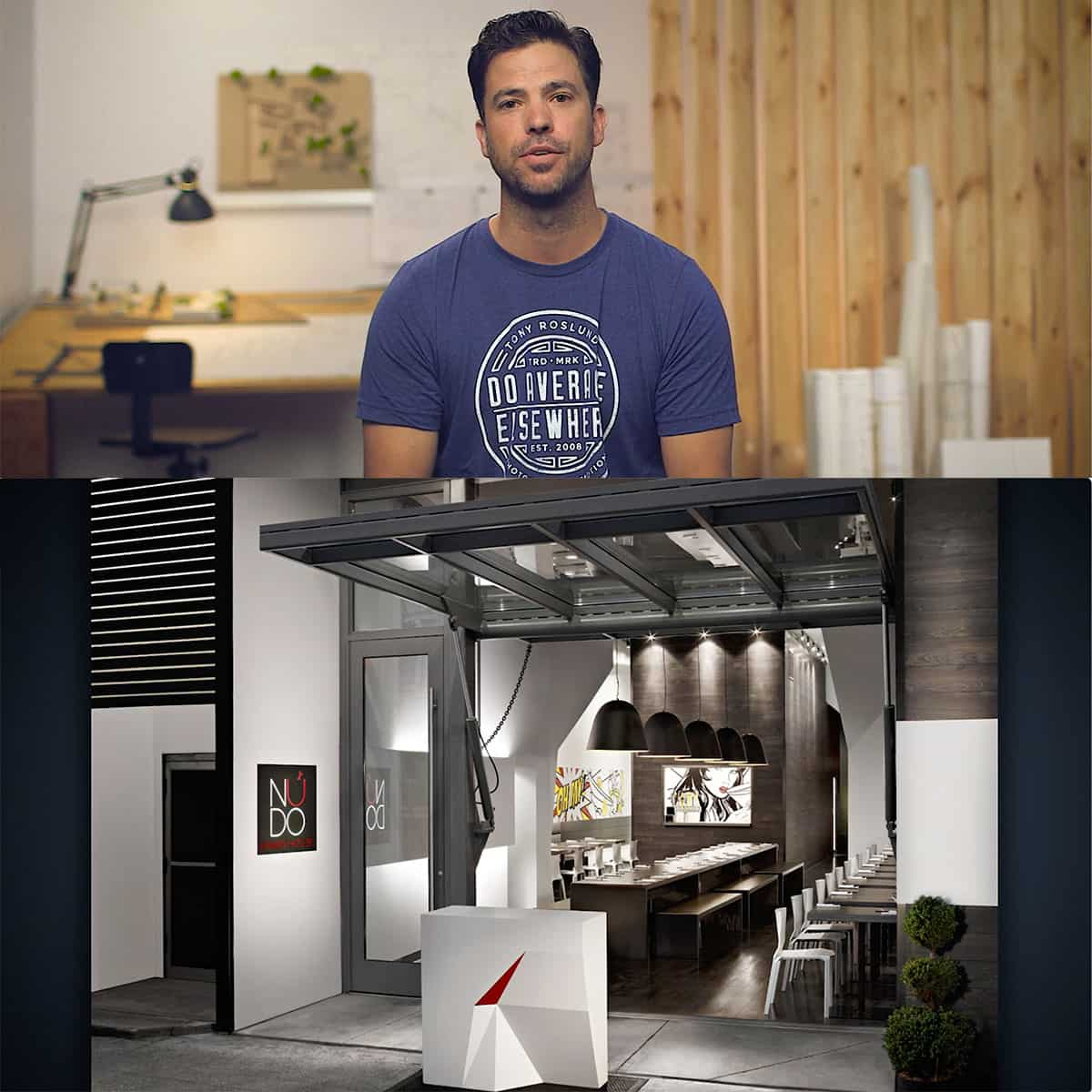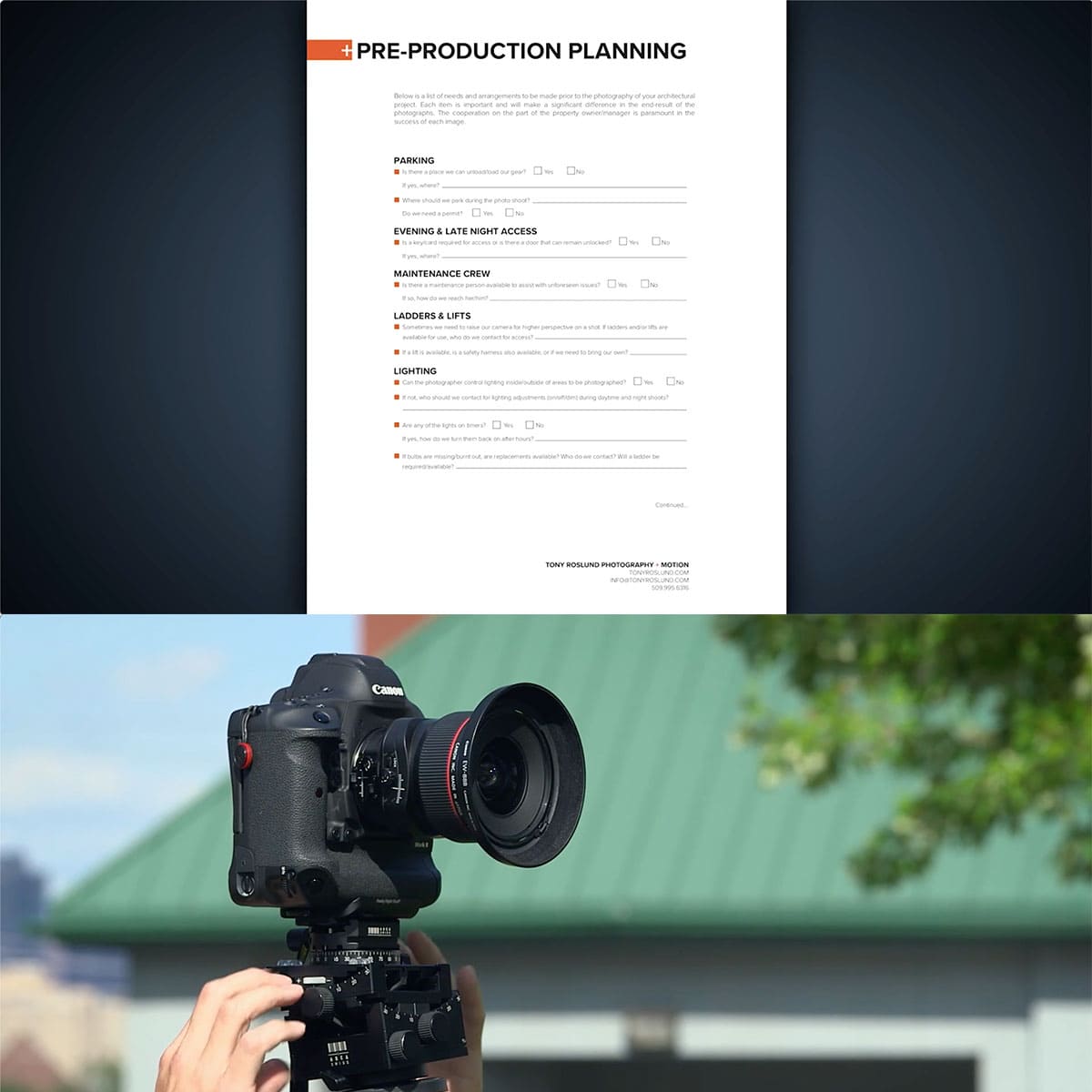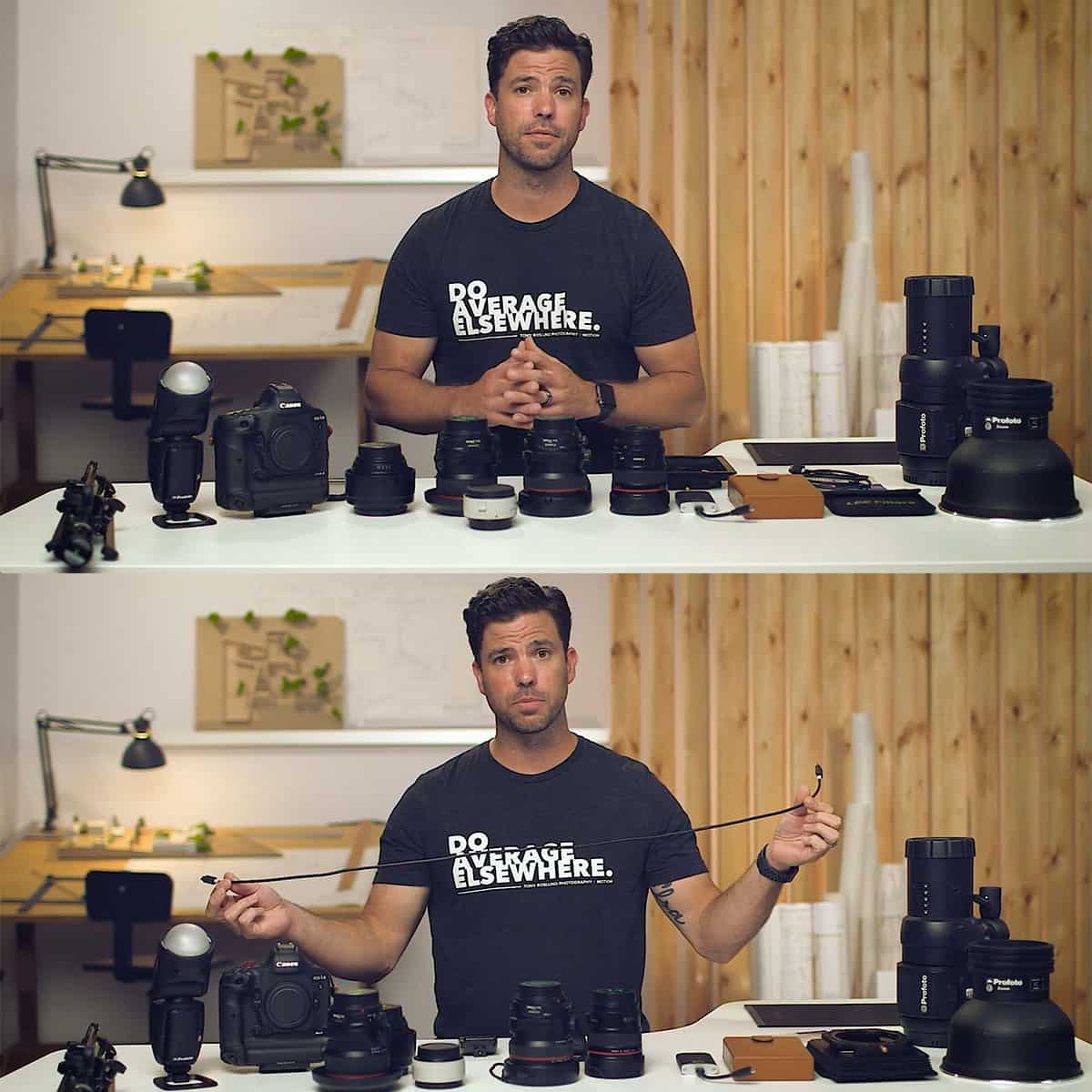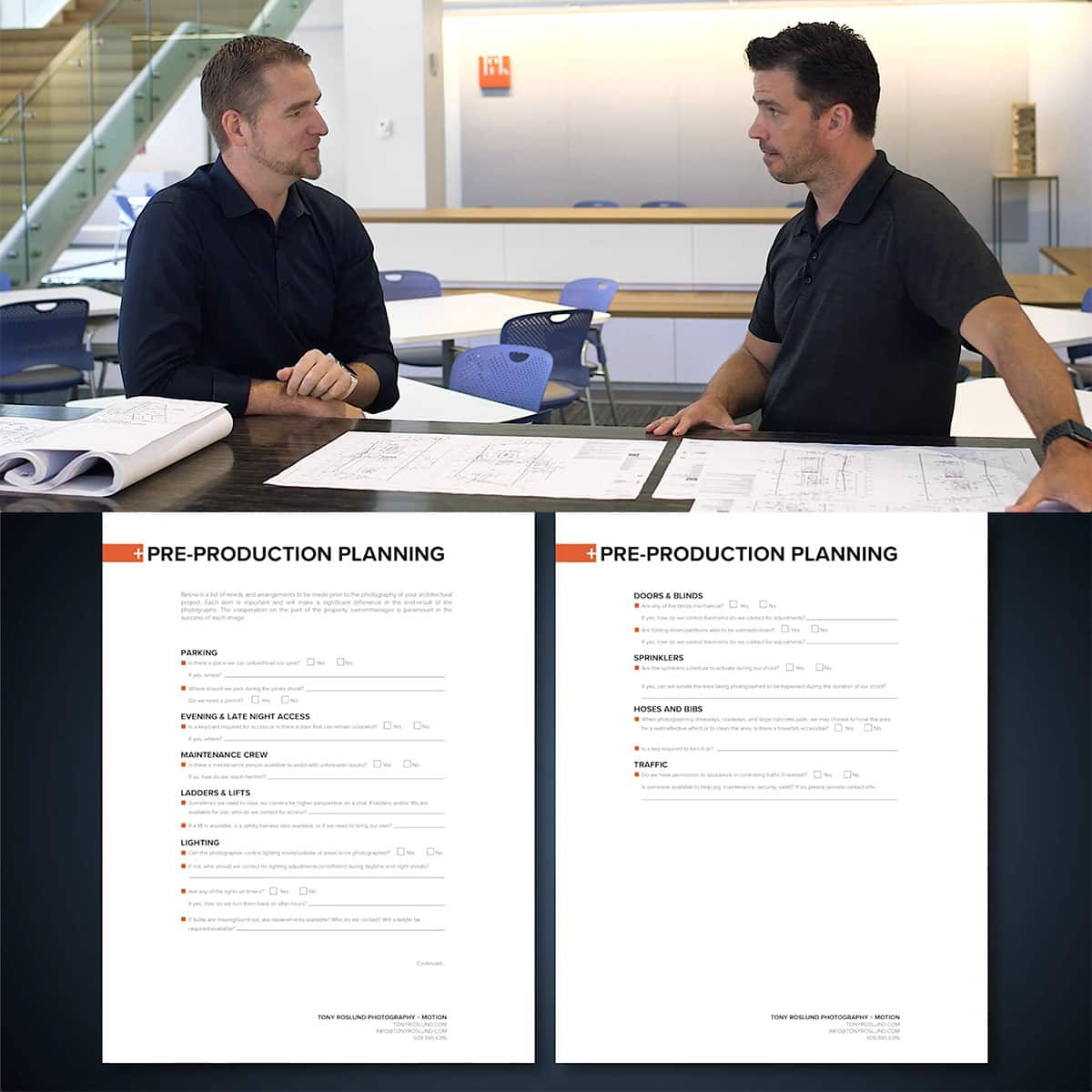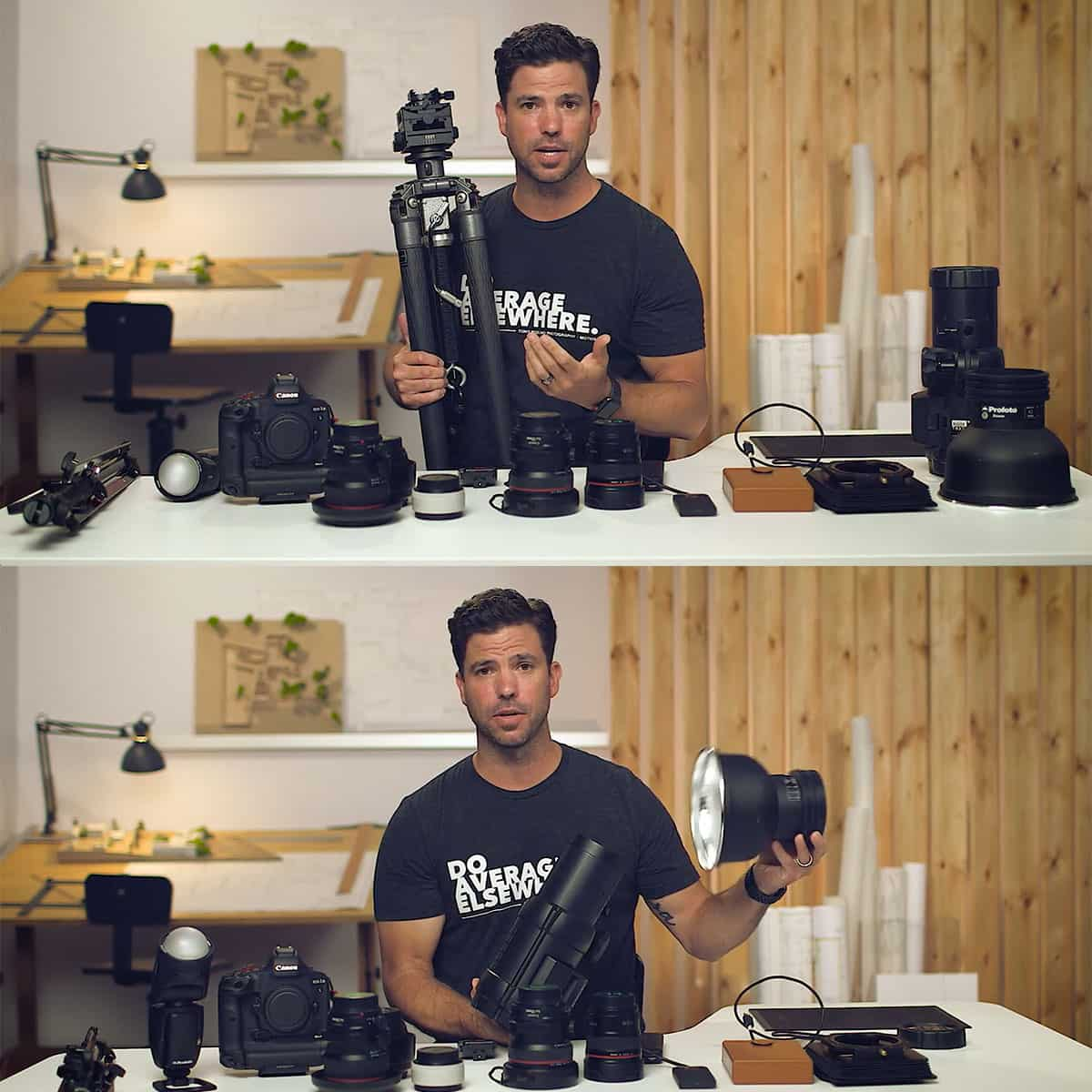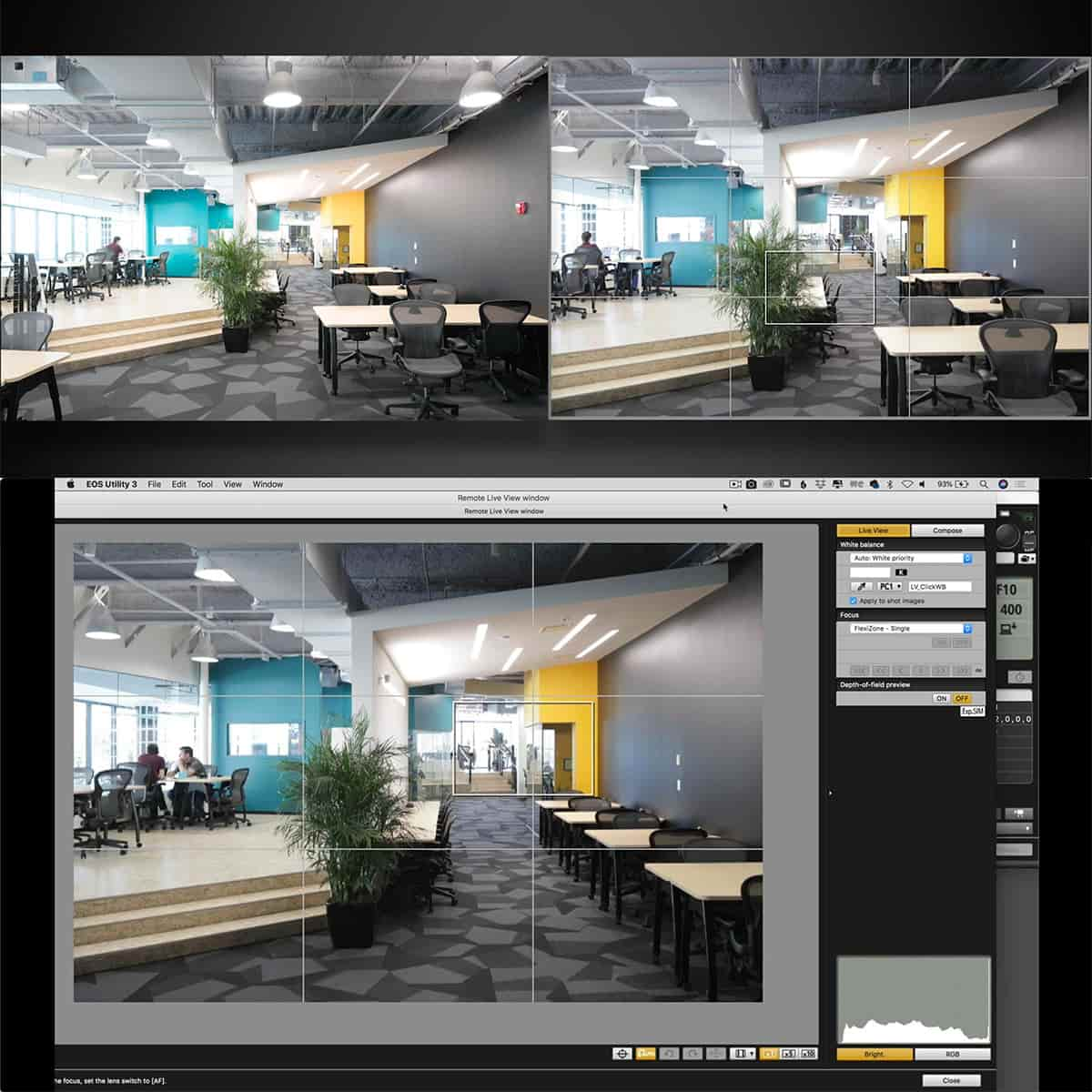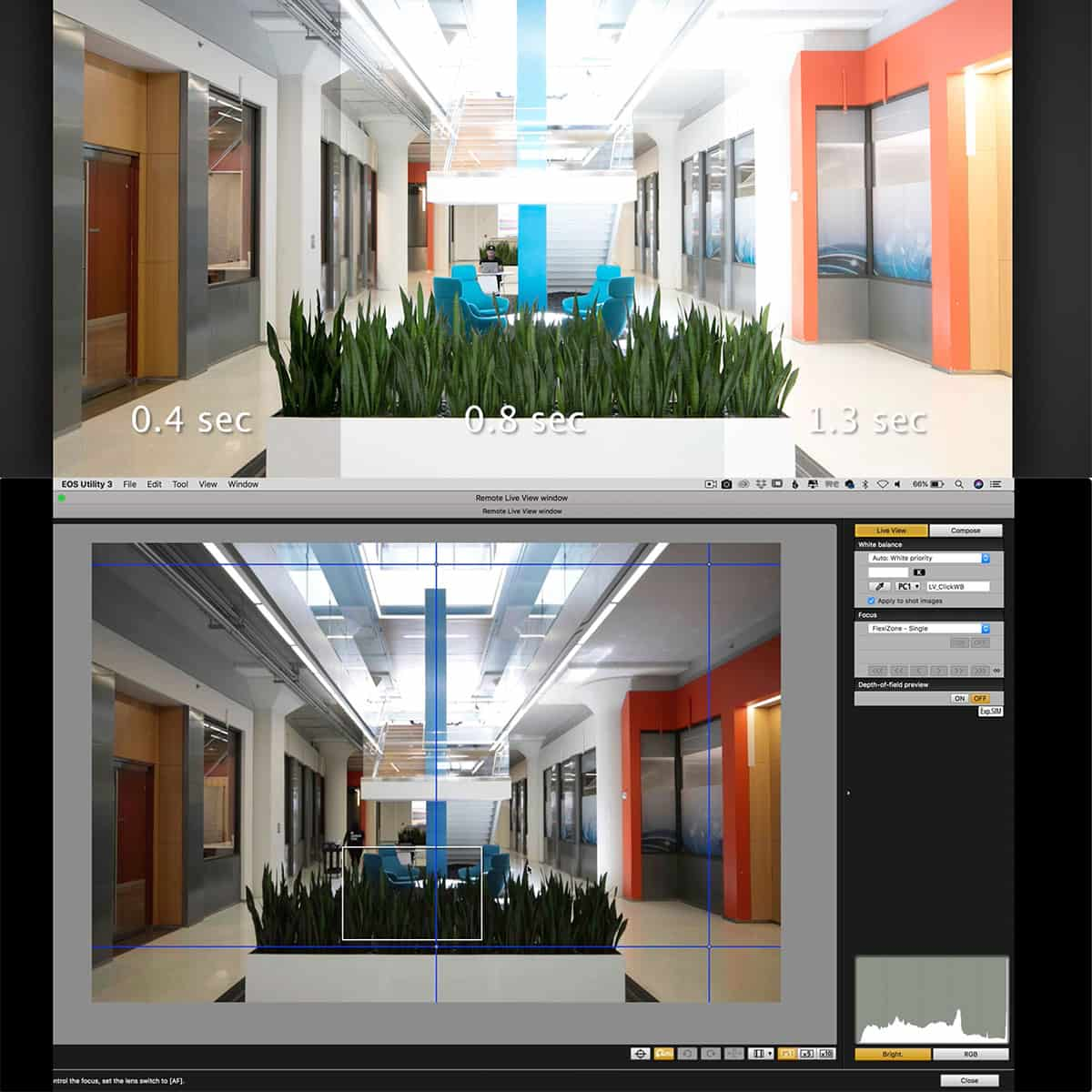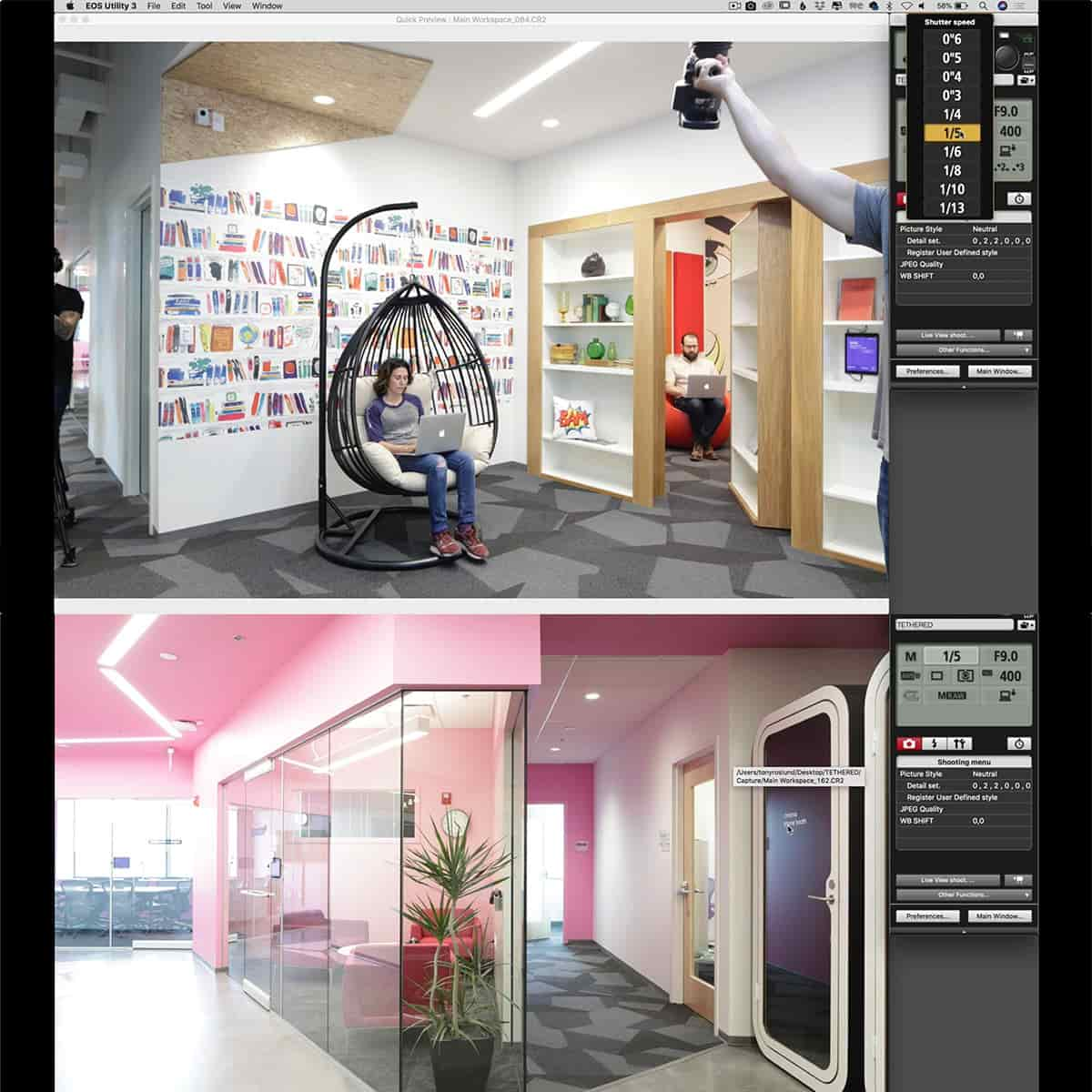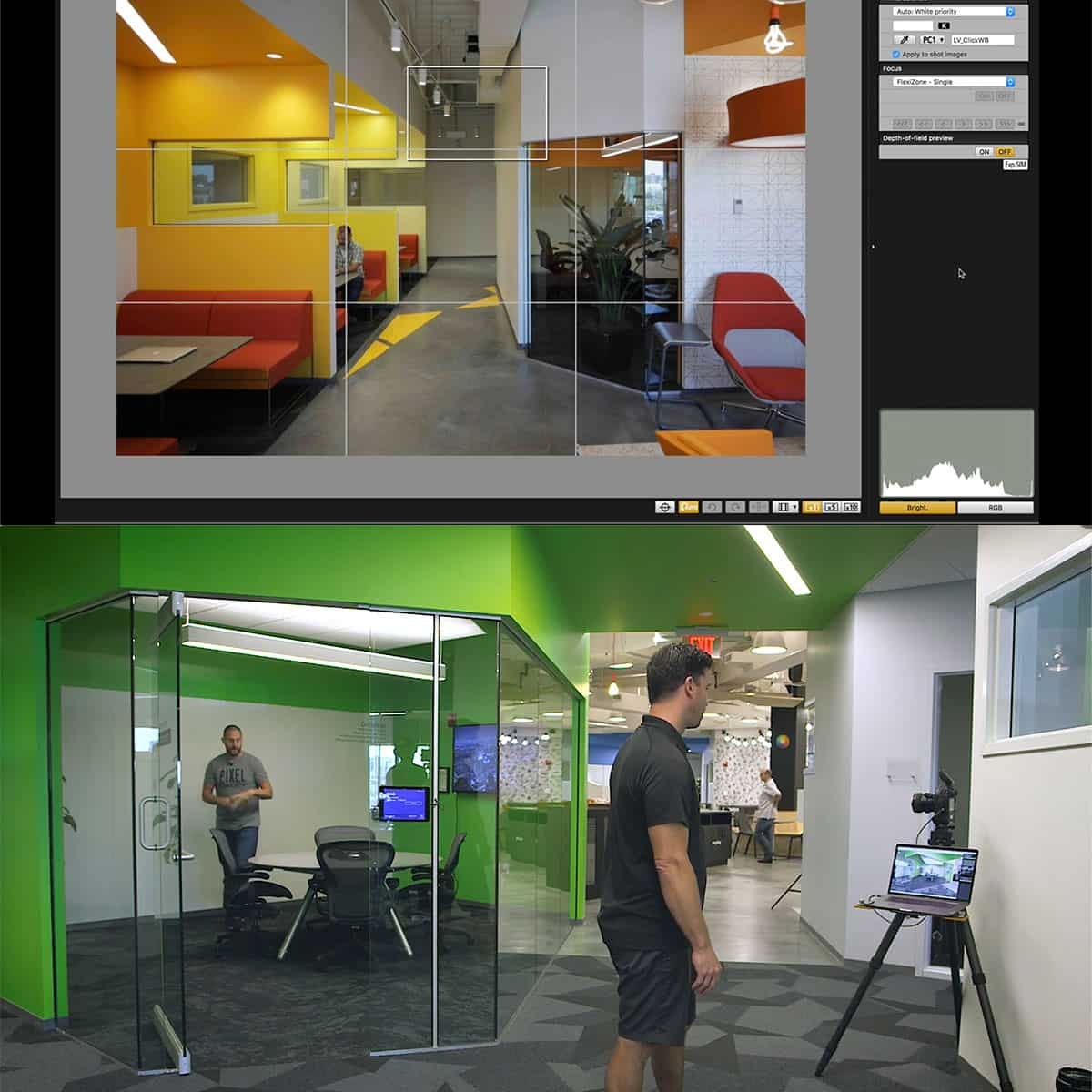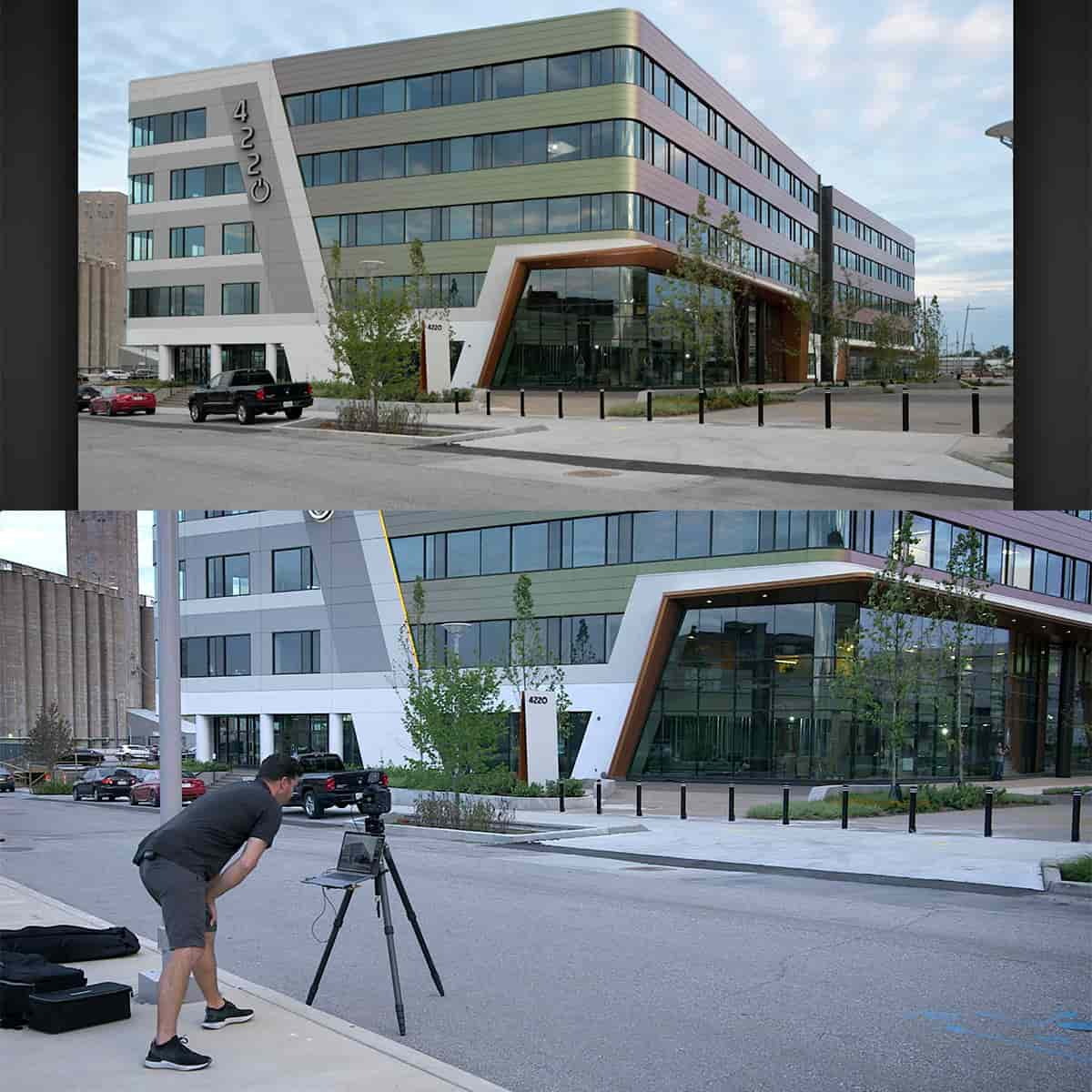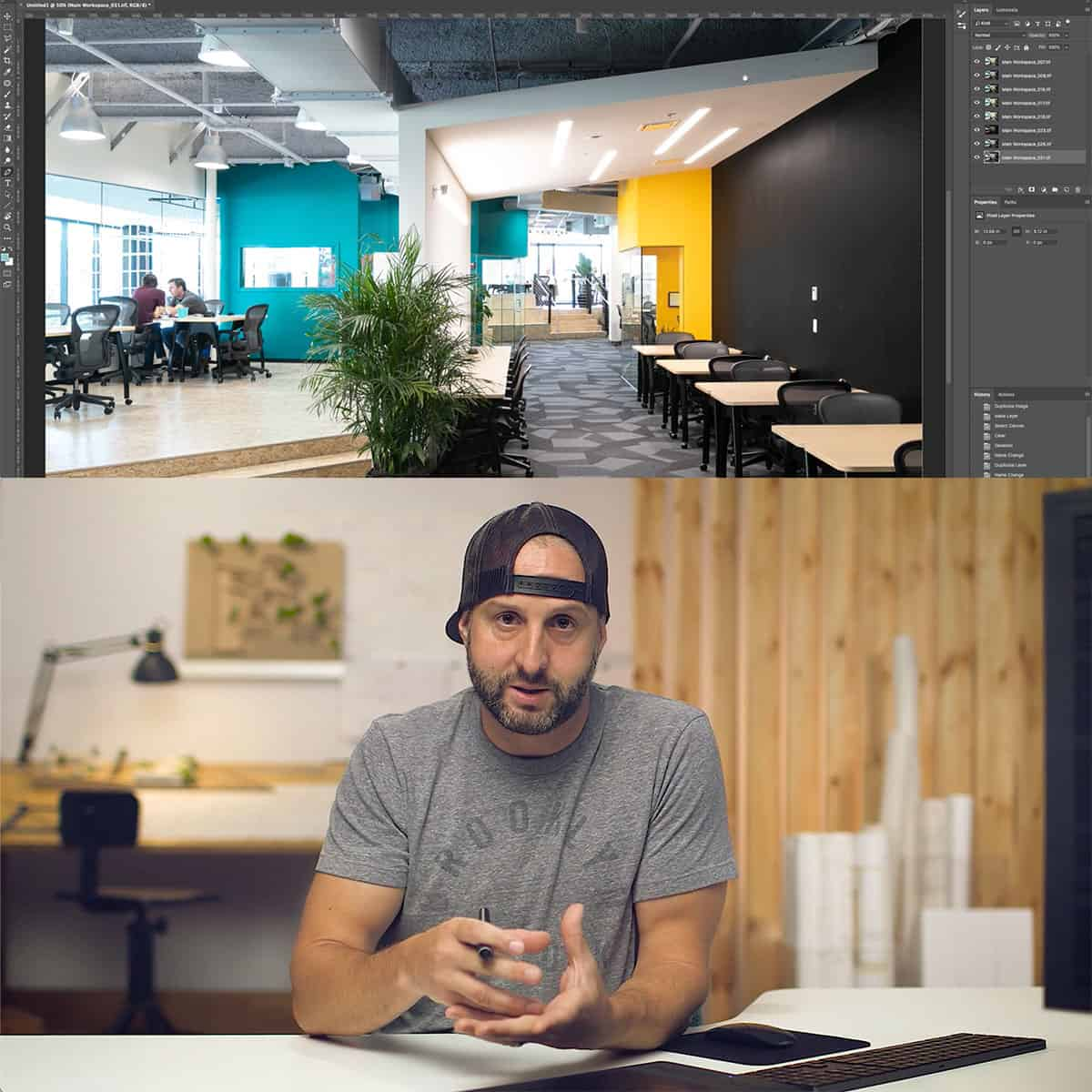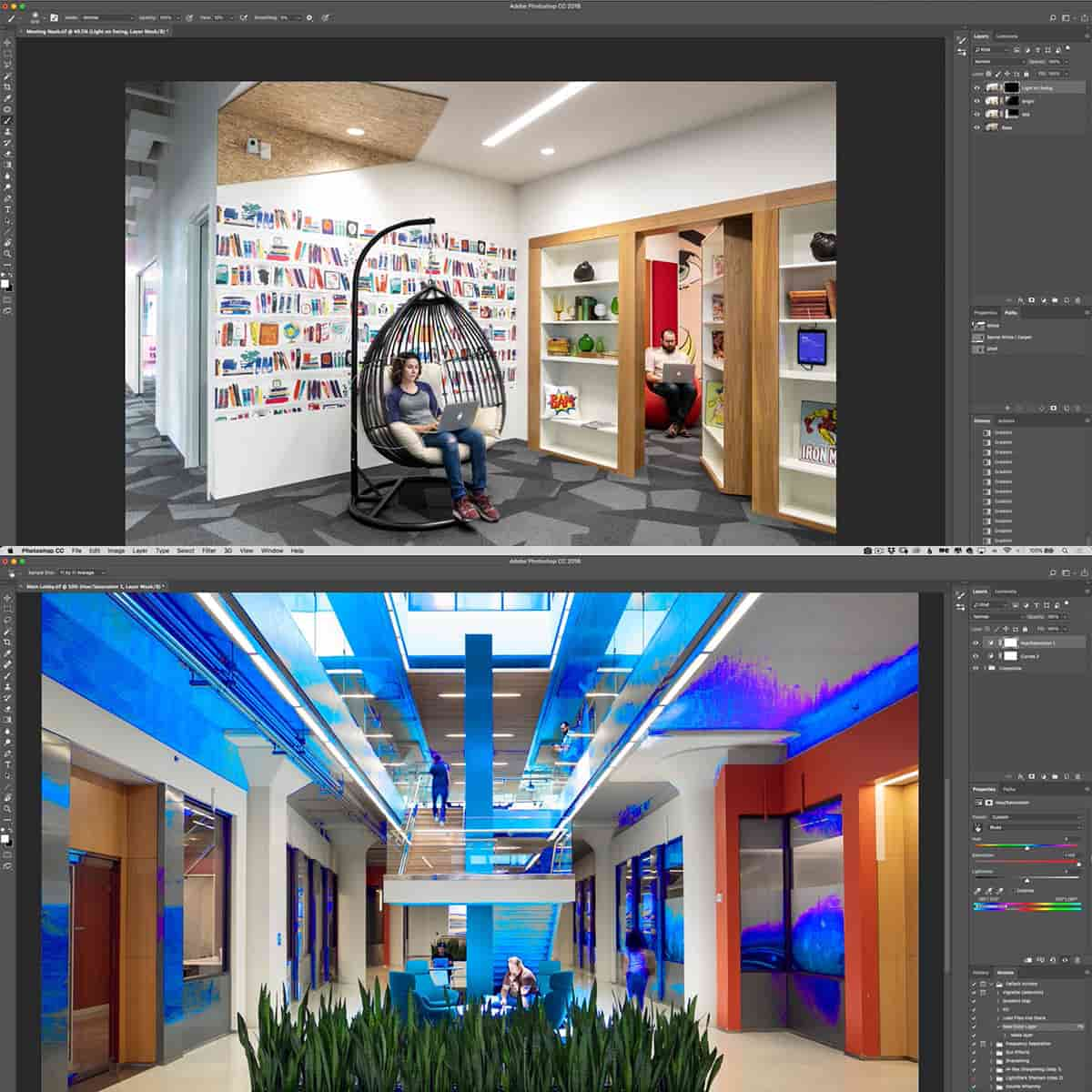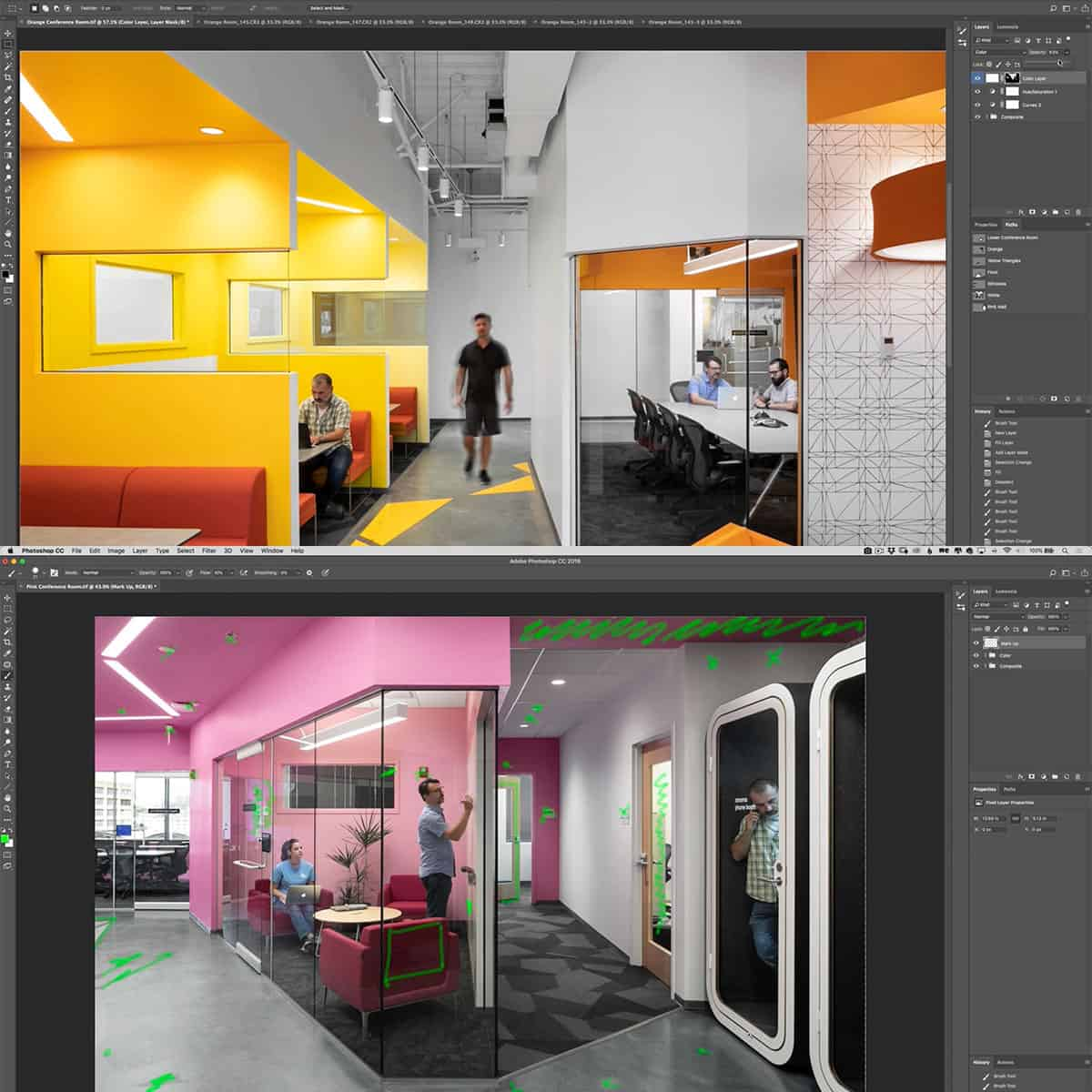Le rôle de Photoshop dans la photographie d'architecture : améliorer les récits visuels
En photographie d'architecture, l'interaction entre la lumière, la composition et la vision artistique du photographe est cruciale. Mais le rôle du post-traitement, notamment via des outils comme Photoshop, est tout aussi primordial dans la réalisation de l'image finale. Avec Photoshop, les photographes peuvent affiner les couleurs, améliorer les textures et manipuler l'éclairage pour mieux transmettre le travail de l'architecte et sa propre vision interprétative. En ajustant divers éléments, le photographe peut contrôler le récit et donner le ton souhaité à chaque photographie, qu'il s'agisse de mettre en valeur l'harmonie entre un bâtiment et son environnement ou d'isoler et d'accentuer des éléments architecturaux spécifiques.
Les capacités de Photoshop sont vastes, mais pour comprendre son potentiel, il faut d'abord maîtriser les techniques d'édition de base, qui servent de base à des tâches plus complexes. La subtilité est essentielle : l'objectif n'est pas de déformer la réalité, mais de la présenter de la manière la plus percutante possible. Les photographes expérimentés utilisent des techniques d'édition avancées pour créer des visuels qui vont souvent au-delà de la simple capture de dimensions physiques pour devenir des narrateurs. Savoir comment améliorer les rendus architecturaux, optimiser le flux de travail et utiliser des approches d'édition non destructives peut faire une différence substantielle dans le produit final. Il s'agit également de communication : présenter des conceptions architecturales à travers des photographies d'une manière à la fois accessible et captivante pour les clients et le public.
Principaux points à retenir
- Photoshop permet aux photographes d’affiner la présentation artistique des conceptions architecturales.
- La maîtrise des techniques d'édition est essentielle pour valoriser les rendus et les visuels architecturaux.
- L’utilisation efficace de Photoshop améliore la narration et la communication dans la photographie d’architecture.
Cours recommandé : Photographie et retouche d'architecture avec Tony Roslund et Barry Mackenzie.
Principes fondamentaux de Photoshop en photographie d'architecture
En photographie d'architecture, la maîtrise de Photoshop est essentielle pour créer des images convaincantes. Nous explorerons les aspects essentiels de Photoshop pour améliorer efficacement nos photographies d'architecture.
Comprendre l'interface
Lorsque nous ouvrons Photoshop pour la première fois, nous sommes accueillis par l'interface conçue pour rationaliser notre flux de travail. L'espace de travail comprend plusieurs panneaux : Calques, Réglages, Historique et le panneau Outils sont essentiels pour nous. Nous organisons notre projet avec le panneau Calques , où chaque élément de notre image peut être modifié indépendamment sur des calques distincts. Cela nous permet plus de contrôle et de flexibilité lors de l'édition. Comprendre l'interface est la première étape pour exploiter les puissantes capacités de Photoshop.
Outils et techniques de base
Notre boîte à outils Photoshop contient une gamme d'outils essentiels pour peaufiner les images architecturales. Nous utilisons fréquemment des pinceaux pour modifier de manière sélective certaines parties de l'image, en ajustant l'exposition ou la couleur exactement là où cela est nécessaire. Les masques fonctionnent de concert avec les calques, nous permettant de masquer ou de révéler des aspects de chaque calque sans altérer définitivement notre image.
Nous appliquons des réglages tels que les niveaux, les courbes et la teinte/saturation pour modifier le ton et l'ambiance générale de l'image. Les techniques impliquant ces réglages sont souvent non destructives, ce qui garantit que l'image d'origine reste intacte.
Un flux de travail bien organisé est essentiel et nous y parvenons en utilisant des raccourcis pour accélérer les actions courantes, ce qui nous fait gagner un temps considérable. Le réglage de la taille et de la résolution de la toile est une tâche de base mais cruciale, garantissant que notre image finale répond aux spécifications nécessaires pour l'affichage ou l'impression.
En nous familiarisant avec ces outils et techniques fondamentaux, nous sommes mieux équipés pour produire une photographie architecturale de haute qualité qui se démarque dans le monde professionnel.
Travailler avec des conceptions architecturales
En photographie d'architecture, notre manipulation des conceptions numériques est essentielle à la présentation finale. Nous travaillons avec des fichiers CAO, gérons les calques méticuleusement et créons des textures qui racontent la véritable histoire des matériaux que nous représentons. Notre approche est méthodique et vise la précision, reflétant les normes rigoureuses de l'architecture elle-même.
Importation de fichiers CAO
Lorsque nous importons des fichiers CAO dans Photoshop, nous prenons la première mesure pour donner vie aux conceptions architecturales. Ce processus précis nous permet de combiner harmonieusement précision technique et vision artistique. Nous veillons à ce que la compatibilité des fichiers soit maintenue et à ce que les données vectorielles soient correctement traduites en pixels, en conservant chaque détail crucial du plan de l'architecte.
Gestion des calques pour les conceptions
La gestion des calques est la pierre angulaire de notre flux de travail Photoshop. Grâce à des stratégies de gestion des calques détaillées, qui incluent des conventions de dénomination et un codage couleur cohérent, nous créons un cadre organisé qui permet des modifications et des ajustements efficaces. Chaque élément, qu'il soit structurel ou décoratif, réside sur son propre calque dédié, ce qui nous donne le plus grand contrôle sur la composition finale.
Créer des textures réalistes
Notre objectif est de simuler des textures réalistes qui reflètent fidèlement la vision de l'architecte concernant les matériaux utilisés dans la conception. En sélectionnant et en affinant soigneusement les textures, nous les appliquons aux surfaces, en veillant à ce qu'elles interagissent naturellement avec la lumière et les ombres. Cela confère une qualité tangible aux rendus numériques, souvent impossible à distinguer d'une photographie de la structure finie.
Techniques d'édition avancées
Les techniques d'édition avancées de Photoshop nous permettent d'affiner nos photographies d'architecture, en améliorant à la fois le réalisme et l'impact visuel. Grâce à l'utilisation de méthodes d'édition non destructives, nous garantissons que l'image d'origine peut être préservée pendant que nous ajustons et expérimentons.
Utilisation des calques de réglage
Les calques de réglage sont fondamentaux dans l'édition non destructive. Nous préférons les utiliser pour appliquer des corrections de couleur et des réglages d'exposition, car ils nous permettent de modifier des paramètres tels que la teinte/saturation sans altérer de manière permanente les pixels de l'image d'origine. Par exemple :
- Calque de réglage de teinte/saturation : ajustez les tons de couleur et la saturation avec précision.
- Calque de réglage des courbes : ajustez l'exposition et le contraste de l'image pour équilibrer les effets de lumière et d'ombre.
Maîtriser les masques de calque
Les masques de calque nous permettent de masquer ou de révéler des parties de l'image ou des calques de réglage. Nous utilisons beaucoup les masques pour appliquer de manière sélective des effets à des zones spécifiques. Les points clés incluent :
- Masque noir : masque l'effet ; peignez en blanc pour révéler le réglage sur les zones souhaitées.
- Masque gris : Masque partiellement l’effet pour une transition plus subtile entre les états modifiés et originaux.
Incorporation de filtres et d'effets
L'arsenal de filtres et d'effets de Photoshop permet de rehausser le récit visuel d'un sujet architectural. Nous devons les utiliser judicieusement pour préserver l'authenticité :
- Filtres de netteté : accentuent les détails et la texture.
- Filtres de flou : créez une profondeur de champ ou mettez en valeur les points focaux en floutant la périphérie.
En appliquant judicieusement ces techniques d’édition avancées, nous faisons ressortir la véritable essence de l’œuvre architecturale, en maintenant un équilibre entre une représentation authentique et une interprétation artistique.
Améliorations du rendu architectural
https://www.youtube.com/watch?v=mPG0j6PFIbc&embed=true
Dans notre pratique, nous utilisons Photoshop pour améliorer les rendus architecturaux, en nous concentrant sur l'éclairage et le réalisme pour transmettre avec précision les conceptions proposées.
Améliorer l'éclairage et les ombres
Nous comprenons le rôle essentiel de l'éclairage dans la visualisation architecturale. En manipulant l'éclairage et les ombres, nous ajoutons de la profondeur et de la dimension à nos rendus. En utilisant la boîte à outils robuste de Photoshop, nous pouvons simuler divers scénarios d'éclairage qui non seulement améliorent l'esthétique, mais contribuent également à transmettre l'atmosphère voulue de l'espace. Par exemple :
- Calques de réglage : pour ajuster la luminosité et le contraste sans compromettre la qualité de l'image.
- Ombre/Surbrillance : pour affiner les zones claires et sombres, en veillant à ce qu'elles soient visibles et réalistes.
Créer des rendus réalistes
Notre objectif avec les rendus réalistes est de produire des visualisations qui ne se distinguent pas des photographies réelles. Voici comment nous y parvenons :
- Amélioration des détails : ajout soigné de textures et de détails aux matériaux, garantissant que les surfaces telles que le verre ou la brique semblent réalistes.
- Éléments 3D : Intégration de modèles 3D dans la scène qui réagissent à la lumière de l'environnement virtuel, améliorant ainsi le réalisme global.
En exploitant Photoshop pour les rendus architecturaux , nous visons à fusionner la précision technique avec la narration visuelle pour aider les clients à imaginer l'architecture finale.
Optimisation du flux de travail
En photographie d'architecture, l'optimisation de notre flux de travail est essentielle pour améliorer notre productivité et nos performances. Nous devons nous concentrer sur l'automatisation des tâches répétitives et l'organisation efficace de nos fichiers.
Traitement par lots et actions
Lorsque nous traitons plusieurs photos, le traitement par lots nous fait gagner un temps considérable. En appliquant les mêmes réglages à un groupe d'images dans Photoshop, nous pouvons maintenir la cohérence dans l'ensemble de notre projet. Nous utilisons des actions pour enregistrer la séquence de modifications que nous apportons à une photo, puis appliquons cet ensemble d'étapes au reste. Une utilisation efficace des actions garantit une qualité de sortie uniforme et accélère considérablement le temps d'édition.
Gestion efficace des fichiers
Notre approche de gestion des fichiers est essentielle pour un flux de travail fluide. Nous classons les images dans des dossiers en fonction de divers critères tels que la phase du projet, l'emplacement ou l'état d'édition, ce qui nous permet de localiser rapidement les fichiers. Nous utilisons des conventions de dénomination descriptives pour faciliter l'identification et la récupération. Ce niveau d' organisation ne vise pas seulement à maintenir nos fichiers en ordre, mais également à améliorer les performances globales de notre flux de travail, en veillant à ce que nous puissions nous concentrer sur la créativité plutôt que sur le travail administratif.
Montage et sauvegarde non destructifs
Dans notre travail, nous mettons l’accent sur un flux de travail non destructif et des stratégies de sauvegarde robustes pour garantir que la photographie architecturale reste flexible et sécurisée tout au long du processus d’édition.
Travailler avec des objets intelligents
Les objets dynamiques sont essentiels à un flux de travail non destructif. Lorsque nous utilisons des objets dynamiques dans Photoshop, nous conservons les caractéristiques d'origine de nos images, ce qui nous permet d'appliquer des modifications, des filtres et des transformations sans modifications permanentes. Cette stratégie préserve non seulement les données d'origine, mais nous donne également la liberté d'ajuster ou d'annuler les modifications à tout moment. Par exemple, si nous devons reformater une image pour différents supports, les objets dynamiques préservent la qualité de l'image malgré tous les ajustements requis.
Bonnes pratiques pour la sécurité des fichiers
Pour la sécurité des fichiers, nos meilleures pratiques incluent des sauvegardes régulières sur plusieurs périphériques de stockage et services cloud. Cela protège notre travail contre la perte due à des fichiers corrompus ou à des pannes matérielles. De plus, nous utilisons le processeur d'images de Photoshop pour convertir et enregistrer des copies de nos objets dynamiques dans divers formats, servant de sauvegarde secondaire et préparant les images pour différentes utilisations.
Communication et présentation
Dans notre domaine, une communication efficace est primordiale lors de la présentation de concepts architecturaux. Nous utilisons Photoshop pour transmettre nos idées de conception de manière claire et convaincante, en veillant à ce que nos dessins d'architecture et nos mood boards soient non seulement visuellement attrayants, mais transmettent également le bon message à nos clients.
Préparation des dessins d'architecture
Lors de la préparation de dessins d'architecture , nos priorités sont la clarté et la précision. Photoshop nous permet d'améliorer ces dessins, en veillant à ce que chaque ligne communique la conception souhaitée. Nous nous concentrons sur la composition pour établir un équilibre au sein des visuels, aidant ainsi les clients à comprendre les relations spatiales en un coup d'œil. Des étiquettes et des annotations sont ajoutées pour mettre en valeur les caractéristiques et spécifications importantes, qui peuvent inclure des dimensions, des matériaux ou des éléments de conception spécifiques propres au projet.
Concevoir des mood boards convaincants
Pour les mood boards , nos présentations de design visent à évoquer des émotions spécifiques et à donner le ton du projet. Nous sélectionnons habilement les images et les textures, en les disposant sur le tableau pour créer un affichage cohérent qui raconte l'histoire du design. Il est essentiel de trouver un équilibre entre les divers éléments visuels, en veillant à ce qu'aucun ne domine l'autre, afin de maintenir l'harmonie sur le tableau. Photoshop simplifie ce processus, en fournissant des outils pour ajuster la couleur, la lumière et le contraste afin d'obtenir le résultat souhaité.
Grâce à des techniques de superposition et de mélange méticuleuses, nous créons des mood boards qui non seulement inspirent mais résonnent également avec les attentes du spectateur, préparant le terrain pour nos propositions architecturales.
Développer les compétences et les ressources
Pour améliorer nos photos d'architecture , apprendre à utiliser Photoshop efficacement peut transformer nos visuels d'images de base en histoires convaincantes de conception et de structure. Développer un ensemble de compétences solides et affiner nos prouesses de conception sont essentiels pour produire des rendus architecturaux Photoshop de haute qualité.
Apprendre avec les tutoriels Photoshop
Nous pensons que consacrer du temps aux tutoriels Photoshop est un investissement rentable. Apprendre tout, des modifications de base aux manipulations complexes, est littéralement payant. Ce faisant, nous garantissons que notre travail reflète une compréhension approfondie des capacités du logiciel. Voici quelques conseils pratiques :
- Raccourcis clavier : les maîtriser peut améliorer considérablement l'efficacité de notre flux de travail.
- Rendu architectural Photoshop : Focus sur les tutoriels qui améliorent spécifiquement nos techniques de rendu.
Créer une bibliothèque de ressources
Nos idées de conception s'épanouissent lorsque nous disposons d'une bibliothèque de ressources à portée de main. Il est essentiel de cultiver une collection de textures, de modèles et d'éléments qui soutiennent nos efforts Photoshop. Voici ce que nous priorisons :
- La qualité plutôt que la quantité : optez pour des ressources polyvalentes et de haute résolution.
- Organisation : Maintenez une bibliothèque structurée pour un accès facile. Cela peut inclure la catégorisation des ressources par type, comme les textures, les pinceaux ou les modèles.
En améliorant nos compétences avec des didacticiels Photoshop ciblés et en créant une riche bibliothèque de ressources, nous sommes mieux équipés pour produire des visualisations architecturales à la fois esthétiques et riches en détails.
Questions fréquemment posées
Dans notre exploration du rôle de Photoshop dans la photographie d'architecture, nous abordons des questions cruciales sur son utilisation, révélant à quel point cet outil est vital pour les photographes et les architectes pour améliorer et visualiser leur travail.
Comment Photoshop est-il utilisé pour améliorer les images architecturales ?
Nous utilisons Photoshop pour rendre les images architecturales plus attrayantes visuellement et pour corriger ou améliorer certains aspects des photographies. Cela peut inclure le réglage des couleurs, l'amélioration du contraste ou le nettoyage des éléments gênants dans l'image, ce qui conduit finalement à une présentation plus soignée et plus professionnelle.
De quelle manière Photoshop est-il essentiel pour les photographes d’architecture professionnels ?
Pour les photographes d'architecture professionnels, Photoshop est indispensable en raison de sa panoplie d'outils complète qui permet une édition d'image complexe. Il nous permet de transmettre la bonne ambiance, de nous concentrer sur des détails architecturaux spécifiques et de garantir que l'image finale correspond à notre vision créative.
Quelles techniques de post-traitement typiques de Photoshop les photographes appliquent-ils pour améliorer les photographies de bâtiments ?
Nous utilisons une gamme de techniques de post-traitement dans Photoshop, telles que le mélange d'exposition, la correction de perspective et le masquage de calque. Ces techniques nous permettent de créer des images qui reflètent plus précisément l'échelle, la texture et l'ambiance des espaces architecturaux.
Comment Photoshop aide-t-il dans le processus de visualisation pour les architectes et les concepteurs ?
Photoshop aide les architectes et les concepteurs en leur permettant de superposer de manière transparente leurs conceptions sur des paysages existants, d'ajouter des textures réalistes et de simuler divers scénarios d'éclairage. Cette capacité est essentielle pour présenter l'apparence d'une structure finale dans son environnement prévu.
Quelles compétences un photographe d'architecture doit-il posséder dans Photoshop pour une post-production efficace ?
Un photographe d'architecture compétent doit maîtriser parfaitement les fonctions de base et avancées de Photoshop, telles que la gestion des calques, les outils de sélection et les techniques d'édition non destructives. La maîtrise de ces compétences nous permet d'effectuer une post-production efficace qui améliore l'image finale sans compromettre la qualité.
Comment l’utilisation de Photoshop dans la photographie d’architecture affecte-t-elle la représentation des textures et de l’éclairage ?
Les outils sophistiqués de Photoshop permettent de manipuler les textures et l'éclairage, ce qui nous donne la possibilité d'accentuer ou d'adoucir les matériaux selon les besoins et de recréer des conditions d'éclairage qui mettent en valeur la véritable essence du projet architectural. Cette manipulation peut grandement influencer la perception et l'impact émotionnel de l'espace photographié.





